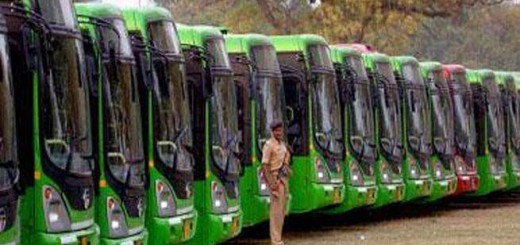India’s Oil Demand Is Set To Break More Records
India continues to look for alternatives to oil imports as its auto sector, economy, and population continue to boom.
India’s oil consumption growth reached a record-level 11 percent last year as an increasing urban population with rising income fueled greater use of cars, trucks, and motorbikes. The country consumed 196.5 million tons of oil products in 2016, up from 177.5 million tons in 2015, according to the Oil Ministry’s Petroleum Planning & Analysis Cell.
Demand for gasoline jumped 12 percent last year to 23.7 million tons, while diesel demand grew 5.6 percent to 76.7 million tons.
The U.S. Department of Energy reports that India was the fourth largest consumer of crude oil and petroleum products in the world in 2015, after the U.S., China, and Japan. The country depends heavily on imported crude oil, mostly from the Middle East, similar to China. More than 80 percent of its crude oil demand is being met through foreign oil suppliers.
The Indian government has been pushing for increasing domestic fuel sources reducing foreign imports, improving air quality, and reducing carbon emissions in fast growing cities like New Delhi. Goals include more domestic oil production, liquefied natural gas for commercial vehicles, compressed natural gas for light-duty vehicles, and renewable energy replacing coal.
Strong demand for oil and fuel production has led Indian refiners to spend billions of dollars in recent years to meet market demand. State-run Indian Oil Corp. has been expanding its existing refineries across the country.
The BP Energy Outlook 2017 reported that India joined other Asian countries in efforts to increase demand for LNG as a replacement for oil. Indian conglomerate Tata is bringing long-distance trucks powered by LNG as a replacement to diesel-fueled trucks.
With India’s booming population, which the United Nations predicts will be larger than China’s by around 2030, energy demand and oil consumption are expected to reach record levels.
The International Energy Agency estimates the country will account for a quarter of global energy demand growth by 2040 coming from booming manufacturing and a bigger, richer and more-urbanized population. The agency expects the country’s oil demand to reach 10 million barrels a day in the next quarter of a century, marking the fastest growth in the world.
Much of that oil is being used for transportation including passenger cars and motorbikes, and commercial vehicles serving growing industries and expanding cities.
India’s auto sales, including commercial vehicles and motorcycles, rose 9.2 percent last year to 21.9 million, according to the Society of Indian Automobile Manufacturers. The country passed South Korea last year, becoming the fifth largest global market for vehicle manufacturing.
Maruti Suzuki India Ltd., a subsidiary of Suzuki Motor Corp. of Japan, is India’s largest passenger car company with about half of the market’s share. Tata Motors and Mahindra & Mahindra Ltd. are two leading automakers in India, with other Indian commercial vehicle and motorcycle manufacturers filling the top ranking. Korean maker Hyundai has been another leading foreign import company in that market, according to India Brand Equity Foundation.
A government program, “Make In India” is considered to be helping the automotive sector grow robustly and create jobs for locals.
While there’s interest from India’s national government to see more electric vehicles come to its streets, its product selection and sales volume pales in comparison to Asia’s leading auto markets, China, Japan, and Korea. Tesla will be opening up in India by this summer, and Mahindra has been the EV market leader so far.
Gasoline and diesel continue to lead the way in Indian vehicle fuel, and that consumption is expected to grow.
Source: https://goo.gl/C9iYLO





Recent Comments